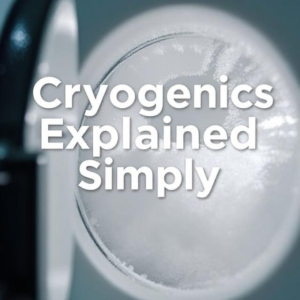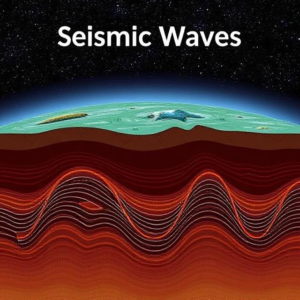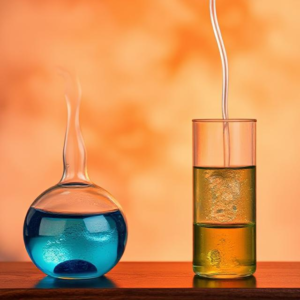Cryogenics
Cryogenics is the study of how materials behave at extremely low temperatures, usually below -150°C (or 123 K on the Kelvin scale). It’s all about the science of very cold temperatures and how they affect matter.

1. What is Cryogenics?
Cryogenics is derived from the Greek words “kryos” (meaning “cold”) and “genes” (meaning “born of” or “produced by”). So, cryogenics is the science that deals with producing and using very low temperatures.
In simple terms, cryogenics focuses on studying how things act when they get super cold, like the materials becoming very stiff or the way gases can turn into liquids at low temperatures.
2. Why is Cryogenics Important?
Cryogenics is used for many important applications in science, medicine, and technology. By understanding how materials behave in extreme cold, scientists can manipulate them in ways that would not be possible at regular temperatures.
3. How Cold is Cryogenic Temperature?
Cryogenic temperatures are extremely cold, much colder than anything we experience in our everyday lives. For reference:
- Ice freezes at 0°C (32°F).
- Liquid nitrogen, one of the most common cryogenic liquids, has a boiling point of -196°C (-321°F).
- Liquid helium, another important cryogen, boils at -269°C (-452°F).
These temperatures are so cold that they make things behave very differently than they do at regular temperatures.
4. How Do We Achieve Cryogenic Temperatures?
To reach cryogenic temperatures, we use special cooling techniques. Some of the most common methods include:
- Expansion of gases: Compressing gases like helium and then allowing them to expand rapidly cools them down to very low temperatures.
- Cryocoolers: Special machines that use various processes (like the Joule-Thomson effect) to cool things down without needing large amounts of liquid nitrogen or helium.
- Liquid Nitrogen and Liquid Helium: These are used as cooling agents because they are already very cold. When these liquids evaporate, they absorb heat and cause other materials to cool down.
5. What Happens to Materials at Cryogenic Temperatures?
At cryogenic temperatures, many materials change their behavior:
- Metals become stronger and more ductile (less likely to break or crack).
- Gases like oxygen, nitrogen, and helium turn into liquids or even solids.
- Superconductivity: Some materials, especially metals like copper and aluminum, become superconductors at very low temperatures. This means they can carry electricity without any resistance, which is amazing for energy efficiency.
6. Applications of Cryogenics
Cryogenics has many important uses in different fields. Here are some of the main applications:
a. Medical Use:
- Cryopreservation: This is the process of freezing biological materials (like cells, tissues, or even organs) for future use. Cryogenics is used to preserve things like sperm, eggs, and embryos, and even blood donations.
- Cryosurgery: In this medical procedure, extreme cold is used to destroy abnormal tissue, like in the treatment of cancerous tumors or precancerous cells.
b. Space Exploration:
- Rocket Propulsion: Cryogenics is crucial for space missions because liquid fuels like liquid hydrogen and liquid oxygen are used to power rockets. These fuels must be stored at cryogenic temperatures.
- Cooling Satellites: Cryogenic technology is also used to cool sensitive equipment on satellites and telescopes to reduce interference and improve their performance.
c. Electronics and Superconductivity:
- Superconductors: As mentioned, some materials become superconductors at cryogenic temperatures, meaning they can carry electricity without any energy loss. This is used in technologies like MRI machines (Magnetic Resonance Imaging) and in particle accelerators.
- Quantum Computing: Cryogenic temperatures are often used to help build and stabilize quantum computers, which use special quantum states to perform calculations far faster than traditional computers.
d. Industrial Applications:
- Liquefying gases: Cryogenics is used in the liquefaction of gases like oxygen, nitrogen, and natural gas for industrial purposes.
- Storage: Cryogenics allows us to store gases and even materials at extremely low temperatures to preserve their properties or make them easier to transport and use.
7. Cryogenic Challenges
Working with very low temperatures isn’t easy, and there are some challenges associated with cryogenics:
- Energy Intensive: Cryogenic cooling systems often require a lot of energy to maintain such low temperatures, which can be expensive.
- Material Problems: Many materials, like metals or plastics, become brittle and may crack at extremely low temperatures.
- Complex Equipment: The machinery required to achieve and maintain cryogenic temperatures is often complex, expensive, and requires constant monitoring.
8. Summary
In summary, cryogenics is the study and application of extremely cold temperatures, typically below -150°C. It’s used in many industries, from medicine (for preserving biological samples) to space exploration (for rocket fuels and satellite cooling), and even electronics (for superconductors and quantum computing).
By understanding how materials behave at these very low temperatures, we can develop new technologies that might not be possible at regular temperatures, making cryogenics an exciting field with great potential.











